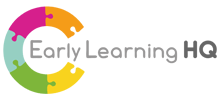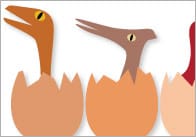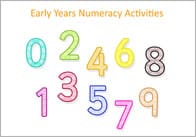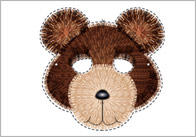Speech and language difficulties
I went to see the King’s Speech the other day and it made me think about developing resources to help those with speech and language difficulties. Anyway, when I got home I looked up some material I was given many years ago when working as a part-time teaching assistant while a law student at University. The information was from a really great organisation called I-can (the national education charity for children with speech and language difficulties) //www.ican.org.uk/. It included a very interesting list of practical ideas for early years practitioners to try when working with children with speech, language and communication difficulties. I thought this list would be worth sharing so I’ve provided an abridged version below:
1. Be a partner to other professionals
If the child is receiving speech and language therapy, then try and make time to speak to their therapist.
2. Eye contact
Children will grasp things more easily if they are looking at you. They may get extra clues to help them understand and join in an activity.
3. Cue them in
Say the child’s name and touch his/her arm when giving instructions or asking questions.
4. Be simple
Long complex sentences with difficult vocabulary can be hard to understand…Try to use language that would be used at home first before moving towards the new vocabulary.
5. Be visual
Make pictures to represent nursery activities, times of the day and places in the nursery. Then nursery staff can use these pictures as a support when communicating with a child who has language difficulties…Access tp these pictures may also give the child a way of asking a question, making a comment or planning what he wants to do.
6. Chunk
Giving information in chunks will give the time to process and understand. When talking to a child with language difficulties try keeping to one or two key elements at a time, with gaps in between.
7. Use all the senses
Pictures and objects can help child’s understanding of an instruction or question. By using them as a tool yourself you can encourage a child to use the pictures and objects to express himself. Using these images and items to communicate will act as a stepping stone to words.
8. Time to talk
A child with speech and language difficulties will need more time to understand a question, think about a reply and then say it. If you are in a rush don’t ask him/her a question.
9. Be honest
If you haven’t understood what a child has said, say so and try to work it out between you using pictures, objects and guess work! Try not to keep asking him/her to repeat it.
10. Groupwork / story time
Cue the children in to what they have to do. For example it is time for “good listening” and “good sitting”. Set achievable targets. Say start with just one minute sitting and listening, and gradually increase this. Using objects will help a child to follow a story. A puppet or stuffed toy to represent the main character, or any other props will help a great deal. Getting a children to act out a story can bring a book to life for them. Use lots of repetition of familiar stories. Spending half a term on one book can mean that a child with a language difficulty can really learn and understand the new vocabulary and story.
11. Routines
Sometimes there are unwritten rules in nursery settings. These will need to be explained to a child with language difficulties. Using pictures when explaining rules will help.
12. Speech
When a child has made a sound error, staff should model the “correct” way of saying the word. Don’t ask a child to repeat it, but do make sure that they have listened.
This leaflet really emphasises the importance of pictures and flash cards. We have quite a wide selection of flash cards and most of the images that we use in our resources are also available as individual jpegs so that you can create your own custom resources. We have put together a visual timetable which may be particularly useful: visual timetable
If there is an activity that you would like to see added to this timetable then please get in touch, or indeed if you can think of any other pictures or resources that would be helpful for children with speech and language difficulties.
Peter
P.S. Readers may find the following link to the Every Child a Talker programme useful: //nationalstrategies.standards.dcsf.gov.uk/node/153355
ECAT is designed “to support in developing the role as a lead practitioner and in developing high quality language provision and [is] closely linked to the Early Years Foundation Stage (EYFS)”.
Popular Teaching Resources
Stay Up To Date
Sign up for our newsletter and we’ll let you know when we create new early years resources.





